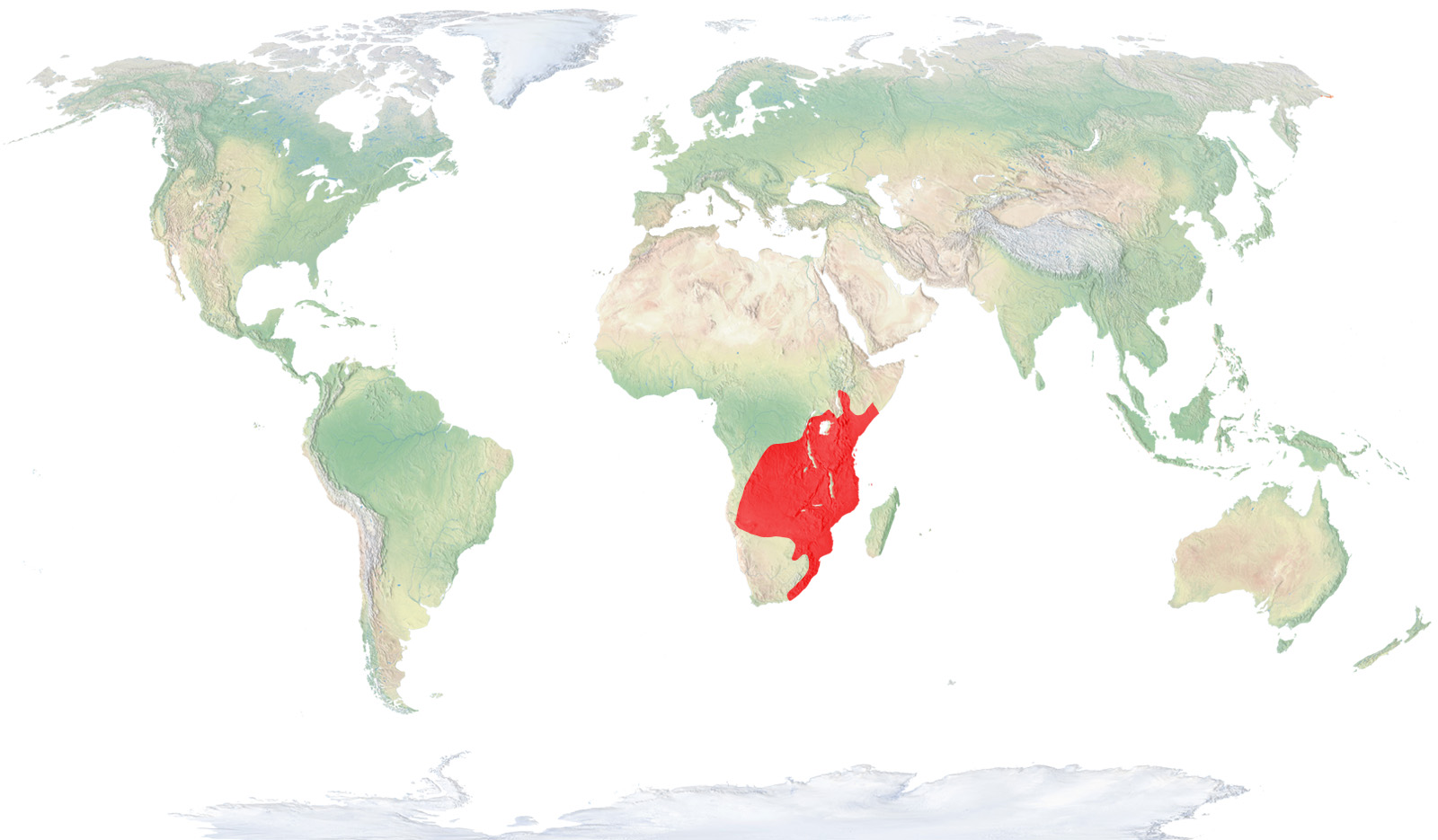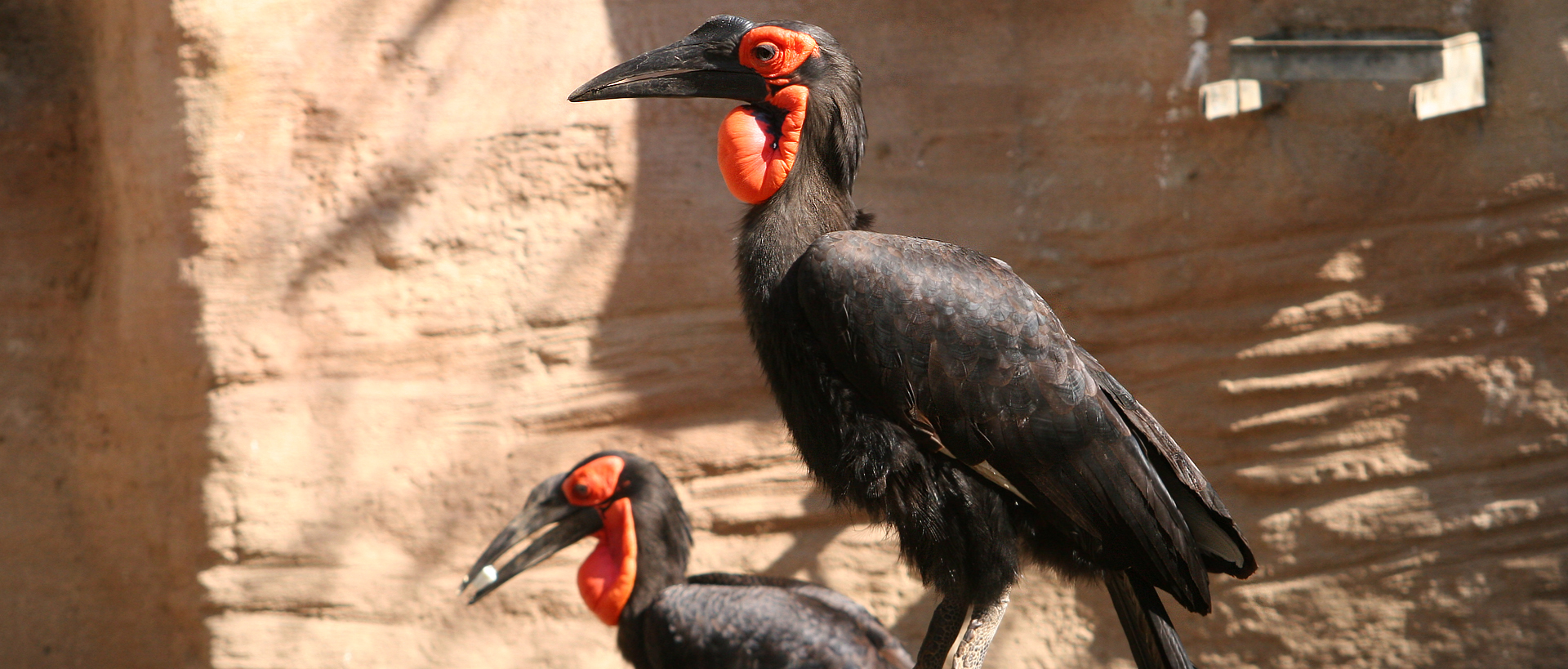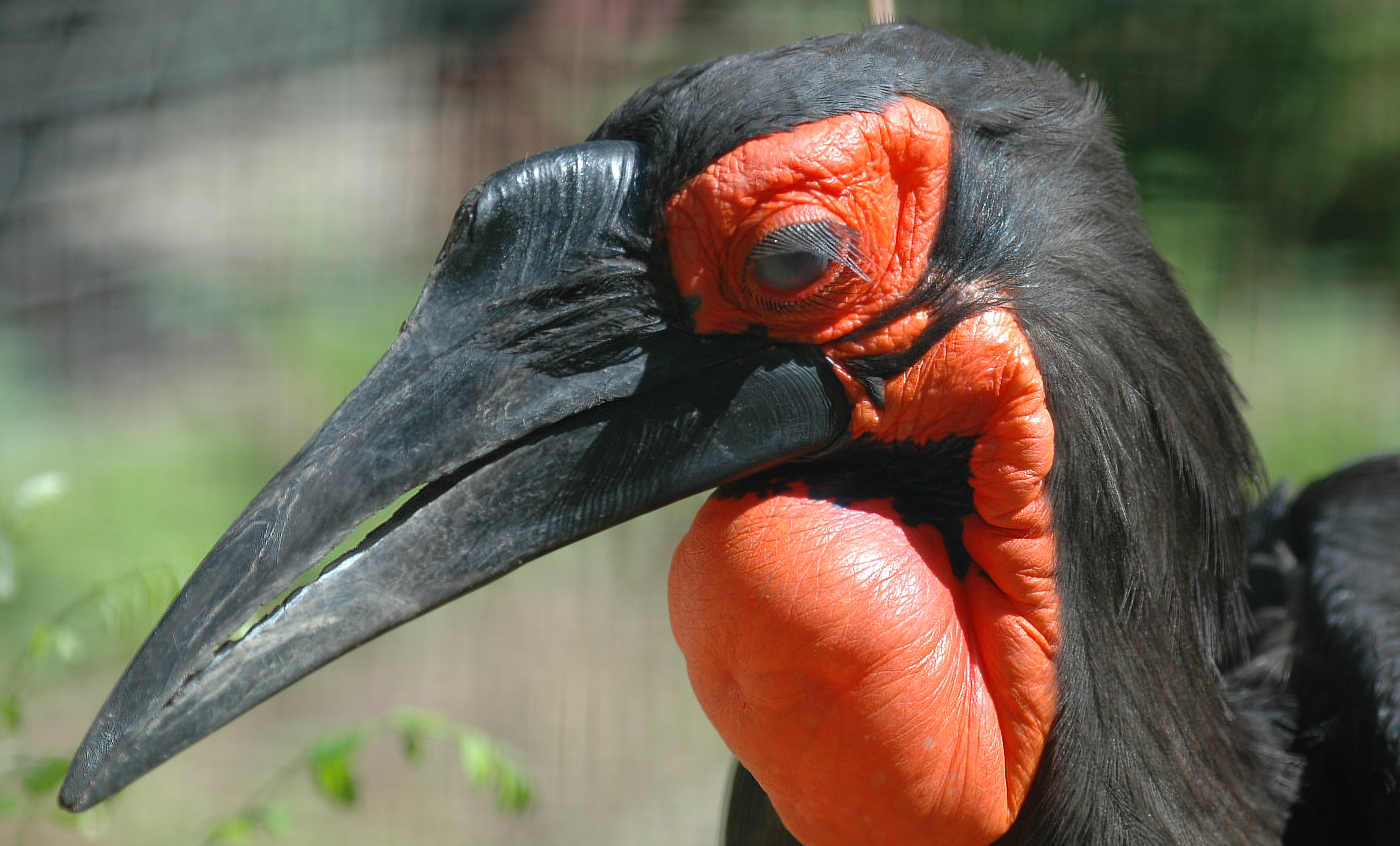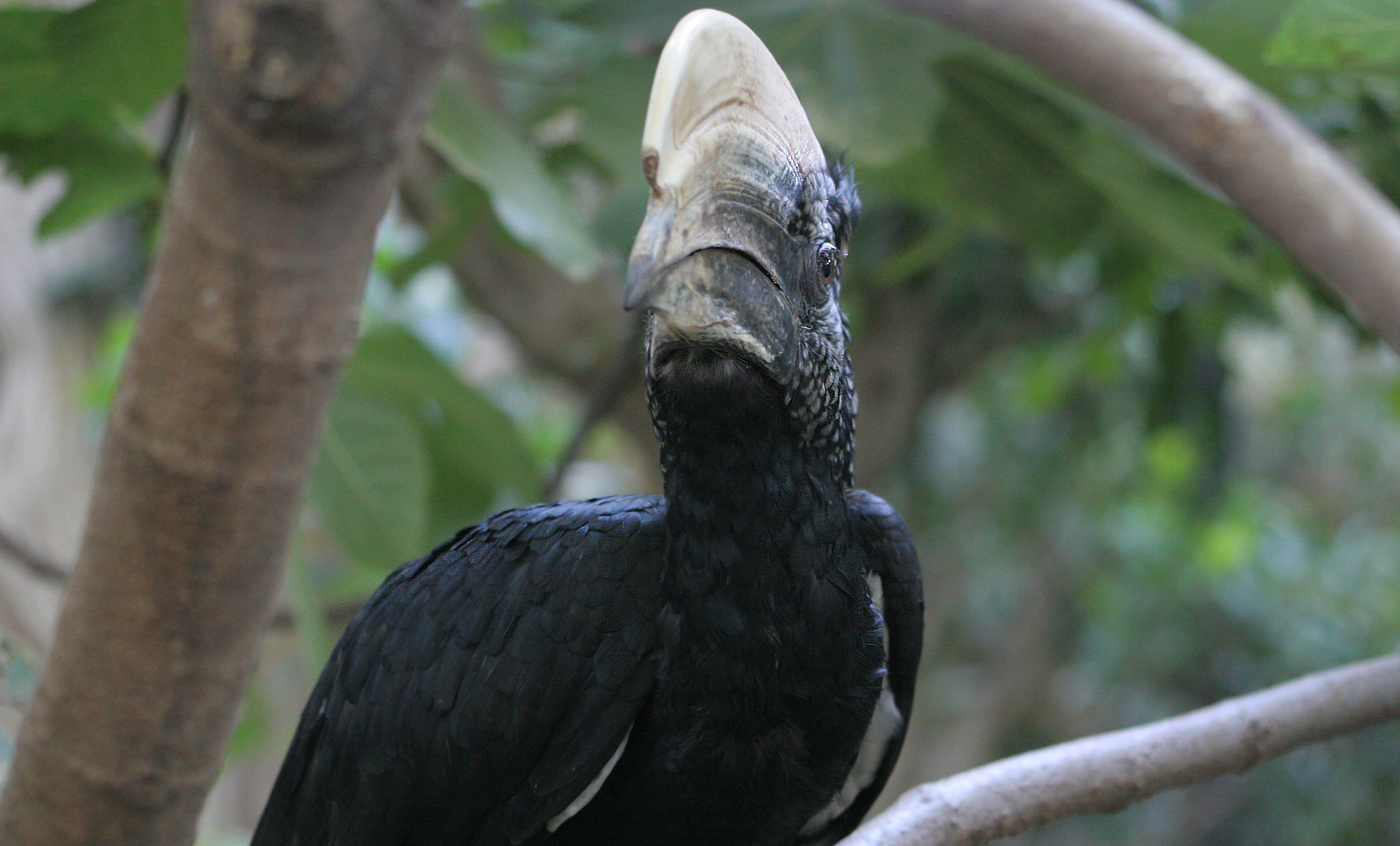Southern ground hornbill
This is the largest of the hornbills, standing at over one metre high and weighing 6 kilos. It lives mainly on the ground and is an omnivore. It eats fruit, seeds and catches a wide variety of invertebrates, in addition to reptiles, small mammals and the chicks of other birds.
This hornbill makes its nest in holes in trees but, unlike all the other species of hornbill, the male does not wall in the female with a mud construction.
Breeding program
Natural habit
Central Africa, Eastern and Southern.

- Distribution / Resident
- Breeding
- Wintering
- Subspecies
Risk level
- Extint
- Extint in the wild
- Critically endangered
- In Danger
- Vulnerable
- Near threatened
- Minor concern
- Insufficient data
- Not evaluated
Taxonomy
Physical characteristics
Biology
Reproduction
Biology
This is the largest hornbill species and is easily distinguished due to being entirely black, except for white primary feathers, and by having vivid red patches of skin on its face and throat. It has a red pouch, or wattle, at its throat that it can voluntarily inflate, making it look a bit strange. The female and male are very similar in size and colouring, although the female's wattle is blue.
It inhabits the African savannah, in both arid and wooded areas up to 3000 metres high.
They eat any small animal they can capture, normally arthropods, although they can also capture larger prey such as snakes, frogs, lizards, rats, hares or squirrels, particularly during dry season. They also eat fruit and seeds. They kill their prey by hitting them with their large beaks.
Breeding is cooperative between group members, with one dominant pair that reproduces and the rest helping out. Nests are made in holes in tree trunks or rocky walls, which the male fills with dry leaves. The incubation of eggs, normally two, is done by the dominant female, which is fed by the rest of the group members throughout the process. The eggs hatch asynchronously and the second chick born normally dies of starvation.
It lives and hunts in groups with two to eight individuals normally. This is a territorial and sedentary species, where only the young females tend to scatter when reaching sexual maturity.
Its status is vulnerable due to the humanisation of many its breeding grounds. In South Africa, it has lost over 70% of its original territory in recent years. At present, the possibility is being researched of collecting these second eggs and raising them in captivity to later introduce them into nature.





